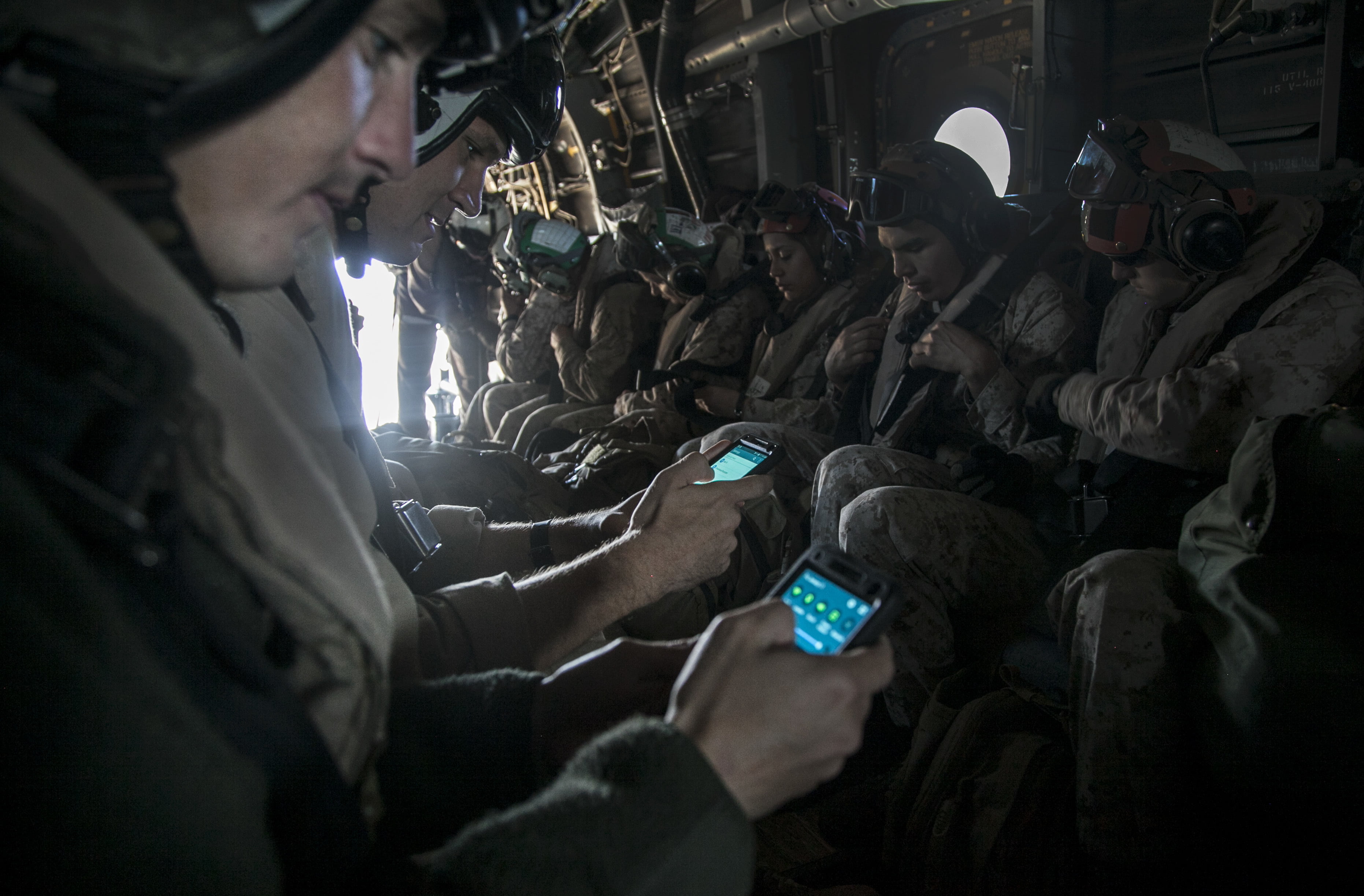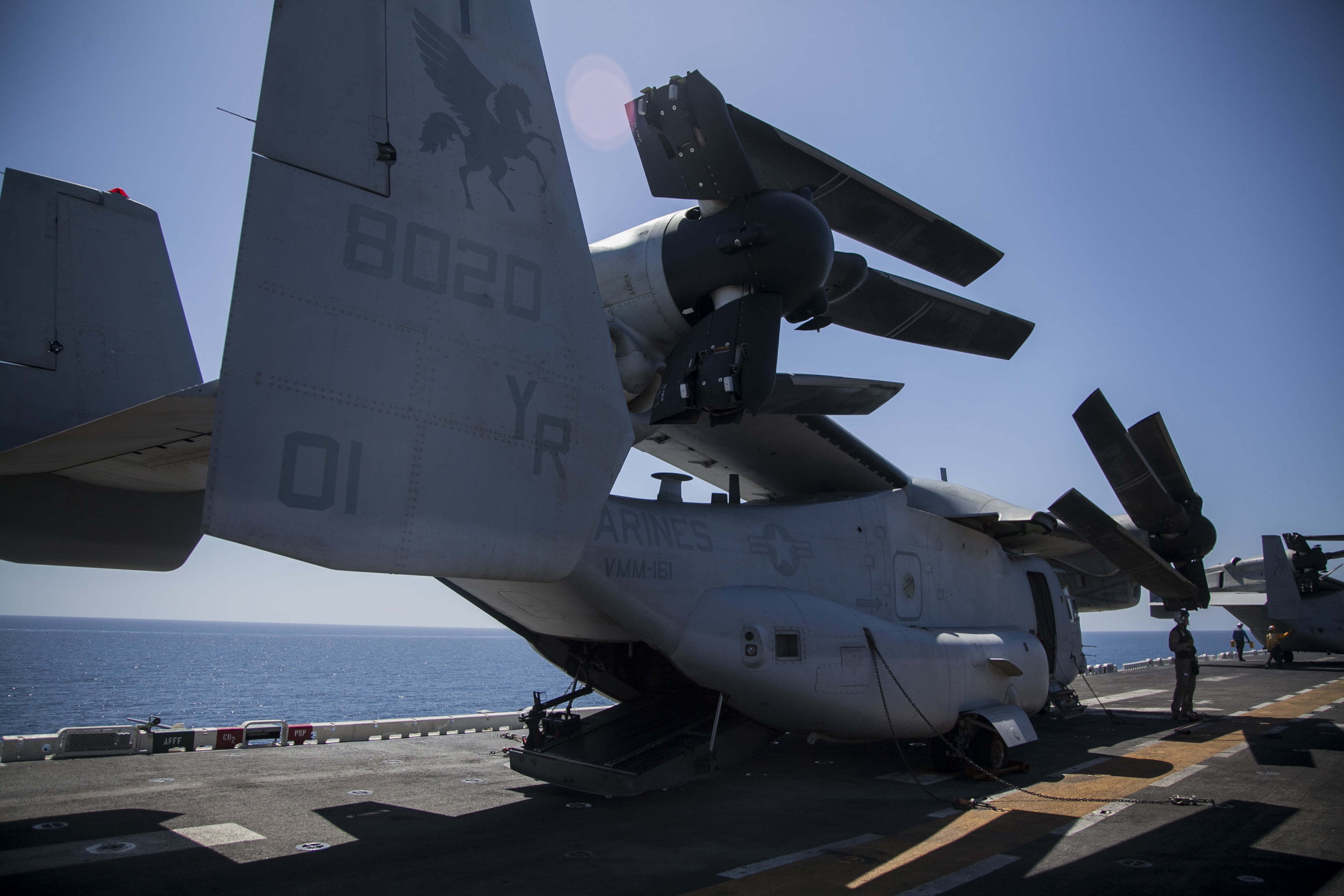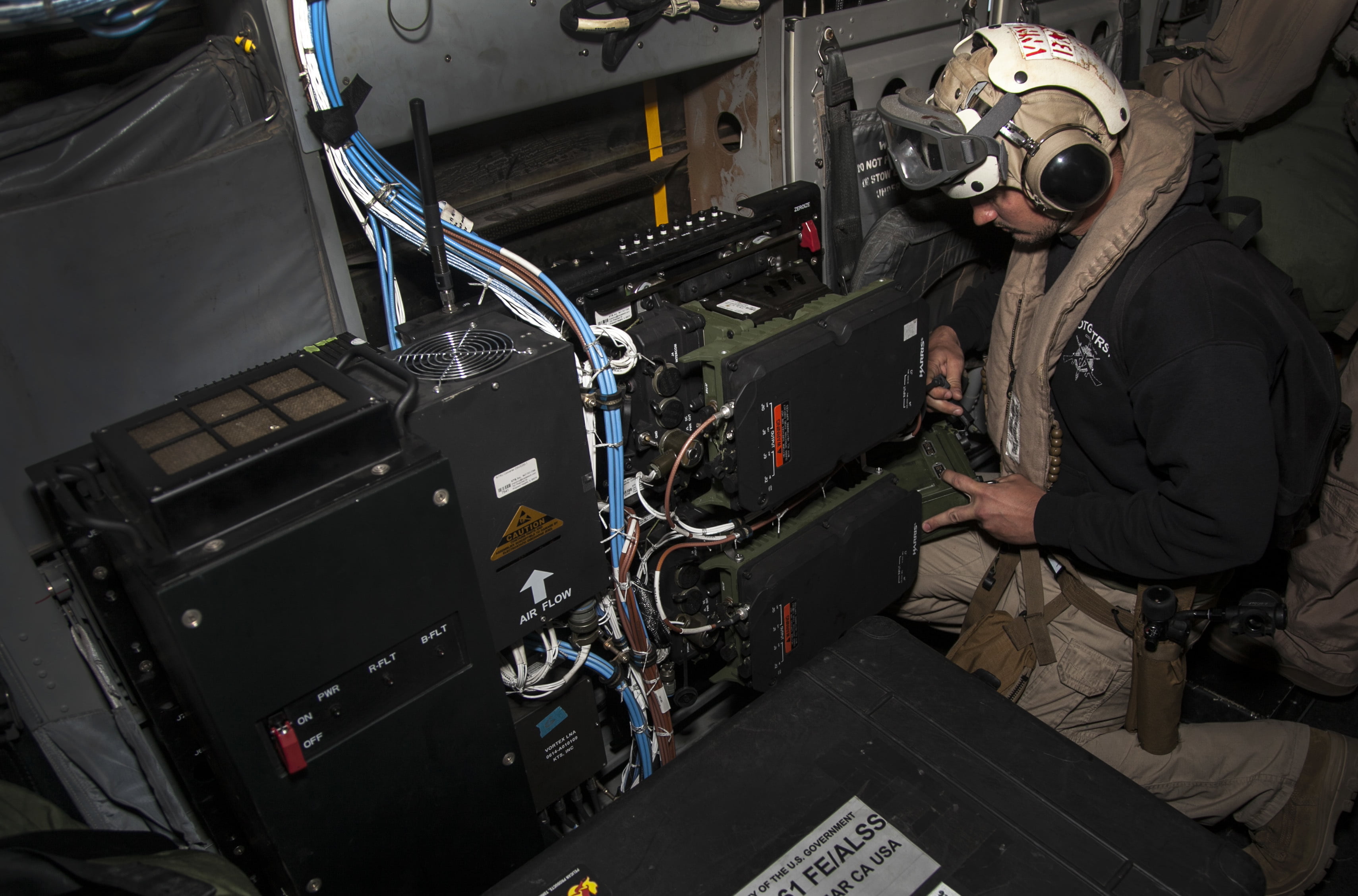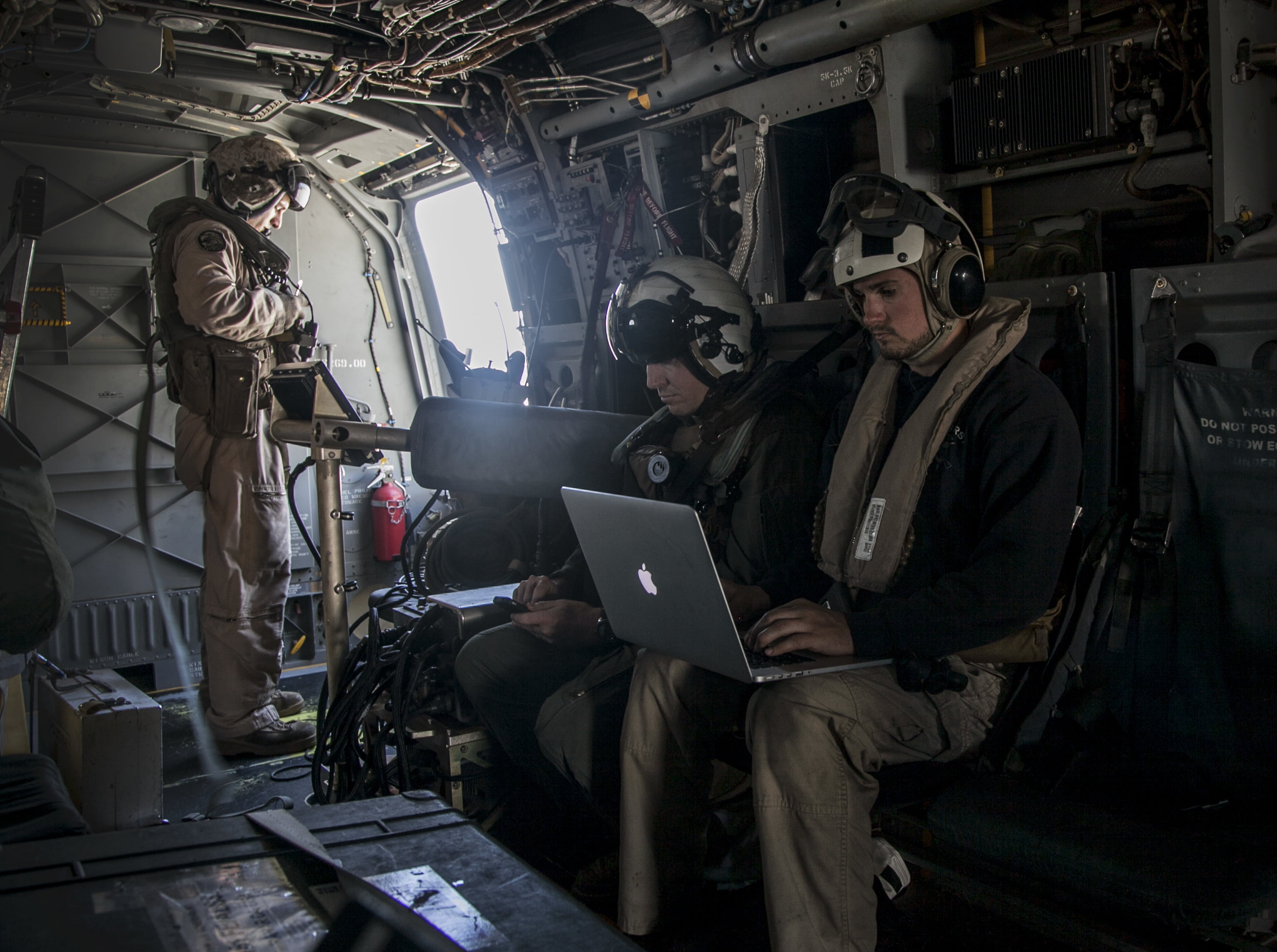By Robbin Laird
As highlighted earlier, USMC aviation is focused on ways to enhance its ability to connect with the MAGTF and to work integrated solutions at the tactical edge.
But how to start the process and to shape greater digital interoperability (DI) within the MAGTF?
Recently, I had the chance to talk with Major Salvador Jauregui and Mr. Lowell Schweickart from the USMC Aviation Headquarters who are working on the digital interoperability effort.
At the heart of our discussion, was the central importance of MAGTF Agile Network Gateway Link (MANGL).
The approach is to shape a template for enhanced connectivity and the Marines are focusing upon MANGL as the foundation from which DI will be enhanced over time.
Their role is to build upon the direction provided by CD&I (USMC Combat Development Command, Combat Development and Integration) and the larger naval force.
The focus is upon coordinating the implementation efforts across the aviation combat element in support of the larger MAGTF and joint force.
There are a number of key takeaways from our discussion as well as insights gained from working through a number of background documents which focus on the digital interoperability initiative.
According to the USMC:
MANGL is designed to be installed aboard airborne assault support platforms to enable better connectivity and persistence in the areas most in need. From a hardware perspective, it is simply a collection of radios that will be shortly replaced by a singular SRP, or Software Reconfigurable Payload which can:
- Receive network signals from multiple networks,
- Translate them from their specific message formats and protocols, and
- Retransmit specific information exchange requirement over other networks that reach different users or by using waveforms that are more suited to long distance or that have greater available bandwidth
MANGL consists of three primary technologies.
The first is the gateway or the mesh network manager.
The second is the software programable payload. MANGL is focused on a transition to SRP to replace the “collection of radios.” SRP-2 will be re-programmable and in the initial instantiation will support the four key waveforms highlighted in the graphic below.
Third is the interface or the MAGTAB which is the Marine Air Ground Tablet.
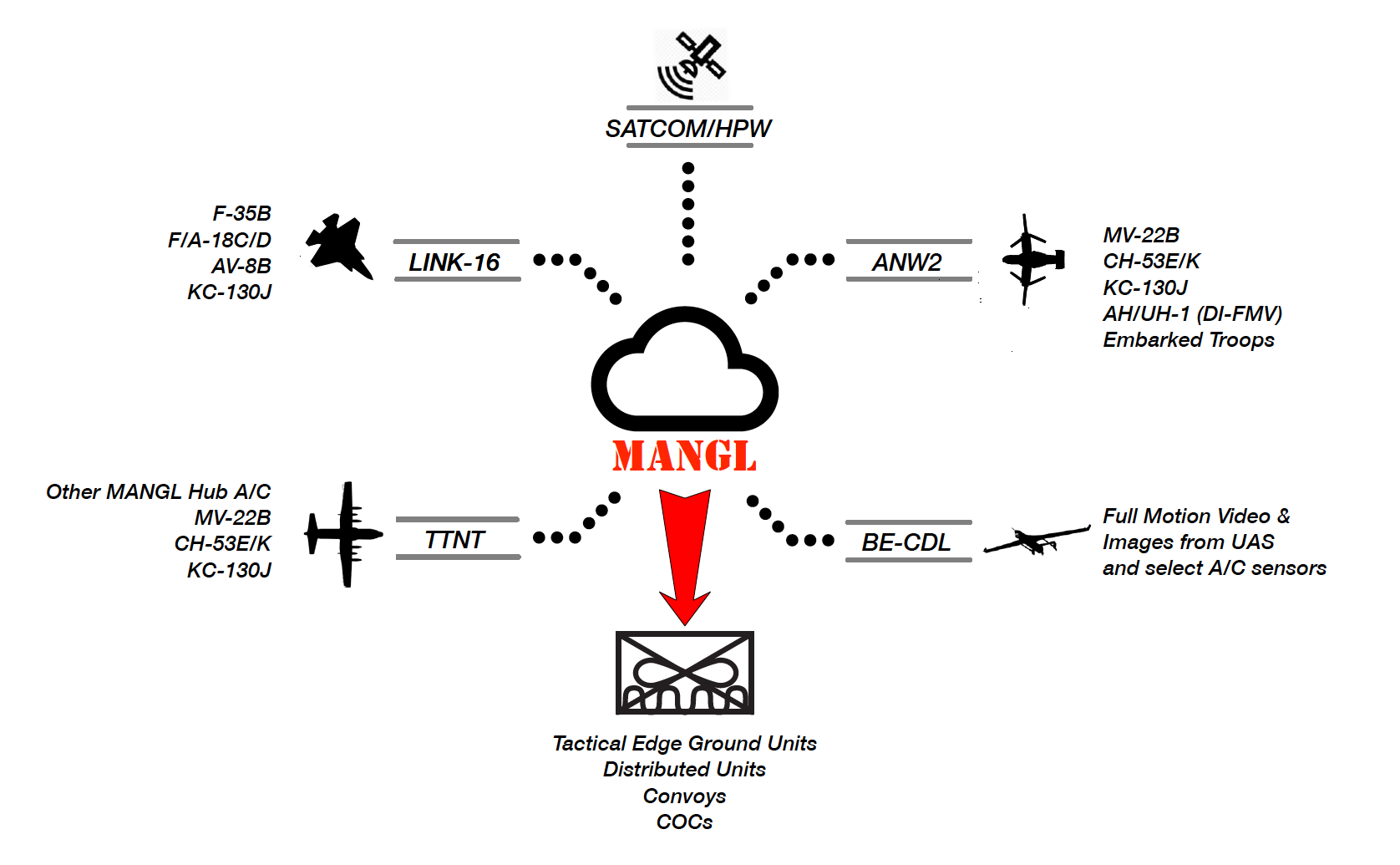
What the Marines are highlighting is the importance of shaping a template for ways to enhance connectivity and integratability without having to acquire a new all-encompassing C2 system. Rather than funding a whole new highway, they are looking to find ways to work around any bumps or holes in the road.
As the DI team put it: “We have designed an ecosystem where new technologies can be on-ramped with a minimum amount of time, and well inside of the typical acquisition structure, and everything has been done with a focus on speed, right down to our acquisition approach.
“While we are developing iterative technologies and we recognize that our first go-around is not going to be perfect, the acquisition approach to accomplish that has to be complementary, because if we took a traditional acquisition approach, then we wouldn’t also be able to execute in a iterative technological approach.
“The two have to be paired.”
They are looking to provide additive capabilities by adding modular, extensible kits in already existing air platforms, while leveraging the advantages of software upgradeability to evolve the software defined radios in pace with the evolution of networks.
And they highlighted that key part of the approach was working with the fleet, with warfighting centers to test out new options, to get feedback and then to bring new capabilities into the force within a relatively short period of time.
They provided an example of how they are working with MAWTS-1 at MCAS Yuma.
“For example at WTI, we have engineers down there twice a year, knee-to-knee with Marines talking about, does this application work for you? How do you want this thing to work?
“Would it be better if the sensors were here or there?
“And then they go and do a refactoring phase over the summer and they redesign a system, or they field the new applications and they come back in the Fall and they ask them again: is this what you expected?
“And the by the next spring, a year later, they are already flying. Not just a prototype, but a fielded application, or a new fielded feature.”
There is a key question of size constraints which comes into play.
Given the limited space on any combat aircraft, size, weight, and power (SWaP) must be managed and reduced to improve operational efficiency and logistics, increase mission life, and reduce the total cost of system ownership. System upgrades are driving added functionality and increased performance, placing additional attention on SWaP.
Because the team needs to work with a wide range of aircraft, each of which has its own dynamic of upgradeability, the approach being taken to connectivity is to have an upgrade path across the fleet but not tied to any particular platform.
Hence, the logic of separating platform upgradeability from C2 connectivity upgradability but finding ways to cross link such dynamic developments.
In shaping the way ahead, the Marines have identified what they believe to be the four key pillars for each interoperable platform.
Those four key pillars are relevant sensors, processors on board to process data to be part of the C2 loop, interfaces which allow for interacting with network generated data and information, and network radios which are normally designed for specific environments whether air-to-air, air-to-ground or ground-to-ground.
This four-pillar template is how the Marines hope to be able to address any innovations to be woven into the DI architecture.
The four pillars are really about configuration management and understanding the essential elements to consider for DI.
As the DI foundation is shaped and executed, moving forward with software upgradeability in the C2 hubs will allow for innovations going forward.
The strategic goal of the MANGL approach is to step out of the platform approach and look at the MAGTF as a whole.
In my view, what the Marines are doing is shaping a template to move forward, which is not a final statement of where they are but rather a trajectory of change.
The Marines are shaping an approach which allows them to have ownership of their digital infrastructure and leverage contractors as partners in shaping code evolution for various pieces in the software upgradeable systems working together to deliver DI.
The Marines are bridging stove piped systems which have been built for tailored tasks or missions.
With the coming of new software defined systems, there is a growing capability to think beyond task-oriented networks and towards cross cutting integratability.
The goal is to use existing radios and find ways to work these existing capabilities to work more effectively together, rather than laying down a new integrated approach and then buying new C2 sets to execute a new integratable approach.
Every Marine Corps aviation asset will have a way to access the MANGL system.
It is clear that the coming of the F-35 has driven this change in part because it is a flying combat system or server rack if you will.
In other words, gateways are the key enablers of the approach.
Processors within the gateways translate all messages and pass them on to the correct radios.
Gateways allow the data to be shared across disparate networks across diverse networks using existing radios and waveforms.
MANGL currently is deigned to link four tactical networks and communicate using different wave forms.
The first is Link-16 which is used primarily for airborne command and control.
The second is BE-CDL is the standard for relaying imagery and video.
The third is ANW2 which is the primary wave form for Marine Corps ground and assault support platforms.
The fourth is Tactical Targeting Network Technology (TTNT) which is a key waveform used by the Navy and is a high bandwidth waveform for sending large amounts of information over long distances.
It is important to understand that data is generated via various networks, not by a single combat cloud, and that the users of these networks clearly have levels of confidence in the data, which is in part driven by their experience with various networks.
It is about networked enabled paths of communication so certainly in my view, it is about how users in various combat environments make decisions and which data sources will have the most credibility to support those decisions.
This is why in my view; it is information confidence and not just about C2.
It is about Command, Control and Confidence in that information.
When making decisions at the tactical edge, what information do the tactical decision makers use to decide to act?
And this is about judgements about the reliability of information from a particular network versus another network. In the intelligence community, it is widely understood that not all networks deliver the same reliability of information; this is also true with the information coming through networks in the combat force.
It is clear that is shaping a foundation for moving forward, but not the end of the process.
And that process was described by the DI team as one working integratability across the MAGTF.
According to the team: “We are constantly consulting with both MCSC and NAVAIR programs to prevent any one platform from fielding a capability that makes them into a “digital orphan.”
“Some programs are adequately funded and pursue cutting edge technologies which are great for some unique task relevant to that platform, but oblivious to the fact that they fight in concert with the MAGTAF and might be creating digital divides that less adequately funded programs will never be able to overcome.”
“The opposite is also true; some programs which have transitioned to sustainment can neglect the information environment and the gains that can be made with incremental investments.
“They eventually find themselves decades behind and little chance of bridging the digital divides.
“With this in mind, we focus on being “fast followers” of CD&I.
“Because of how we’ve architected the MANGL systems, we are never more than 1-2 years of funding away from implementing the newest waveform, application, or protocol.
“When the Service decides on a future LPI/LPD waveform, MANGL will be well positioned to implement it quickly and at scale with common SRP radios waiting for software updates.
“When the Joint Tactical Grid implements a new application to enhance sensor sharing, every MANGL processor will be a candidate for the new software load.
“In this way, we have designed a technical capability that reflects the institutional paradigms and acquisition realities of the real world.
“It’s never going to be perfect, but it will be agile enough to provide a foundation for the information environment that with the Marine Corps’ will need in future conflicts.”
See also, the following:
The USMC and Digital Interoperability: Shaping an Integrated Distributed Force
Working the Way Ahead for the USMC: How MAWTS-1 Supports Change


